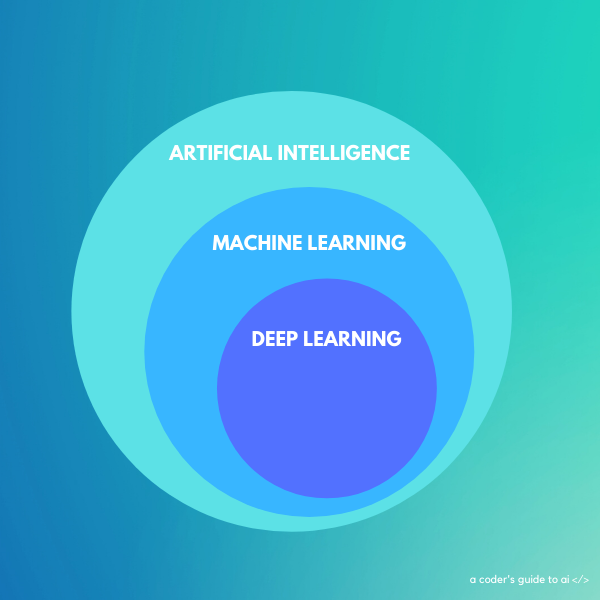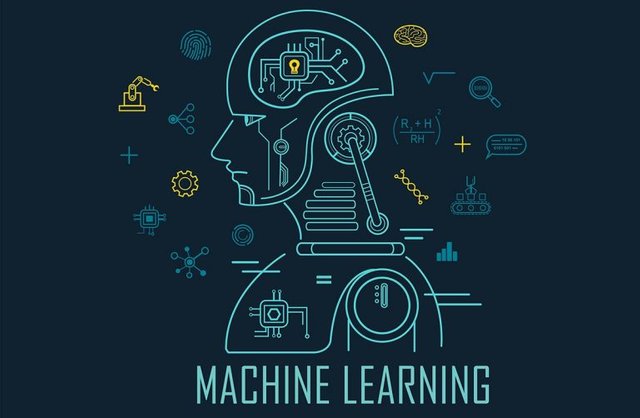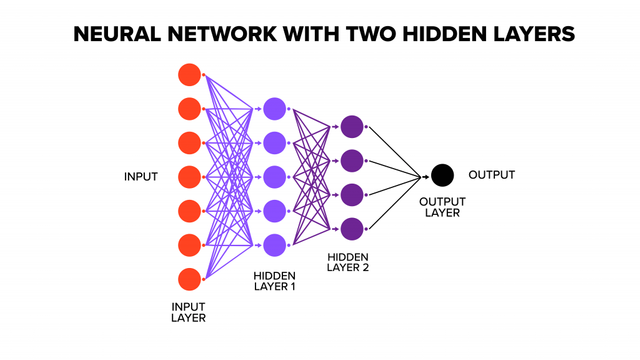Hello people, I hope you all are having an amazing time learning, in today's post I will try to give a detailed perspective of these fields and would try to make the differences between them clear to you. If you want to know the details of machine learning and how it works, you can refer to my previous post about Machine learning.
Machine Learning vs. Deep Learning vs. Neural Networks
It's a very common thing these days to use the works deep learning and machine learning interchangeably, though there are some stark differences between these fields. Artificial Intelligence AI is the mother field of Machine learning, deep learning, and neural networks. Following the inheritance pattern, Machine learning has deep learning as a subfield which has neural networks as its subfield.
Firstly, let's get the abbreviations in our heads so we can easily navigate through the details.
AI: artificial intelligence
ML: machine learning
DL: deep learning
NN: neural networks
Artificial Intelligence (AI)
Artificial intelligence is a very self-explanatory term, it simply means the quest to make the machines mimic the human behavior showing intelligence. In the 1940s, computers were given the ability to be programmed to carry out very complex tasks—like playing chess and communicating with other humans. Improving gradually and gaining proficiency skilled the machine so much that on May 11, 1997, IBM computer names Deep Blue defeated the world chess champion after a six-game match. Despite continuous advancement in processing capabilities of computers, there are still some tasks that require human intelligence. But there are also domains in which computers have achieved the performance levels of human intelligence in doing certain specific tasks.
Some domains where AI is contributing to society are:
- Medical diagnosis
- computer search engines
- Speech recognition
Machine Learning (ML)
Machine learning is a sub field of AI, but as discussed before, not all AI is machine learning. ML can be adequately defined as:
Machine learning is an application of AI that equips the systems with the ability to automatically learn and improve from experience without being explicitly programmed."
Machine learning is an application of AI that aims to program computers in such a way that they will learn and improve by themselves, we only need to provide them with enormous amounts of data that they would use to improve without human intervention, assistance, or any explicit programming. The learning is based upon observations or data, i.e. direct experience, or instruction, to refine the output as much as possible.The main difference in deep learning and machine learning is the technique by which algorithm learns. DL automatically extracts features from datasets, minimizing the human intervention and allows usage of bigger data sets. Deep learning can also be called "scalable machine learning". Traditional or "non-deep" ML is requires human assisstance to learn. Human data science experts formulate the set to detemine the differences between inputs, it generally needs more structured data to train.
Deep Learning (DL)
Deep Learning initially uses labeled datasets to train its algorithm, but it doesn’t necessarily require a labeled dataset. Unstructured data set can also be computed through it, it can distinguish various types of data. Unlike ML, it doesn't require human assisstance to do data processing, making it highly scalable machine learning. It’s a field of ML that works on the concepts of neurons (linear functions and activations) to train its algorimth. The algorithms of DL can outperform others algorithms based on other ML techniques, this technique is mainly responsible for peaks of AI in the 21st century .Deep learning is behind fast-paced progress in the following advanced domains:
- Computer vision
- Natural Language Processing.
- Facial Recognition
- Image Recognition
Neural Networks (NN)
Neural networks mainly consists node layers, a input layer, few hidden layers, and lastly an output layer. Every node (artificial neuron) links to some other and have some weight and threshold. If output of any individual node exceeds certain threshold value, that node turns on and transmits data to the succeeding layer, else no data is transmitted to next layer. The word “deep” in DL refers to the depth of layers(patterns) comprising the neural network. A neural network which is based on more than three layers—including the input layer and output layer, can be categorized as DL or deep NN. On the other hand NN based on two or three layers can be classified as basic neural network. Some prominent NN are:
- LeNet5
- GoogLe Net and inception
- ResNet
- SqueezeNet
I hope you guys found this post worth reading, I appreciate your support and would like to hear your feedback on it, happy learning.



